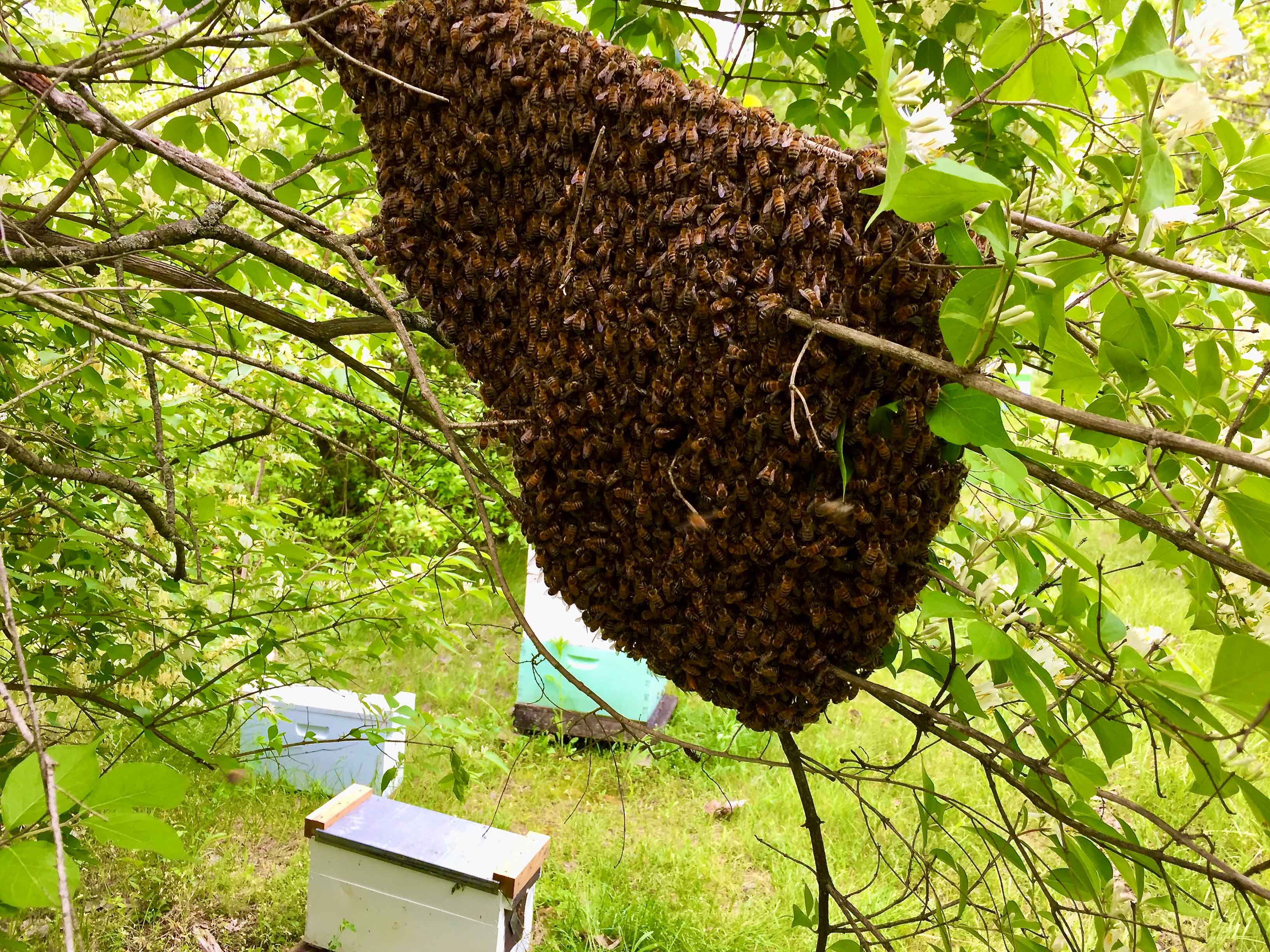Above: Honey bee swarm in spring. Photo by Krispn Given
Do you now, or have you ever encountered a honey bee swarm in one of your trees? It’s an alarming event for most homeowners, but it’s a golden opportunity for a local beekeeper.
Bees are an essential component of our ecosystem, and they’re important pollinators of many of the foods we eat, especially fruits, nuts, and vegetables. Honey bees and other pollinators are directly or indirectly responsible for one-third of the food Americans consume with an annual economic value of $19 billion.
A team of expert authors, led by Purdue’s Fred Whitford, collaborated to write the Purdue Extension publication, “The Complex Life of the Honey Bee,” from which we’ll gather a few key excerpts for content today.
This week we’ll cover hive makeup, honey bee biology, and what honey bees forage for. Next week we’ll conclude with why hives swarm and what you can do to help a new hive get off to a good start.
Let me start by saying I think the study of honey bees is fascinating. The social nature of the hive, acting as one, is complex.
A healthy colony averages between 20,000 to 60,000 honey bees, but these estimates vary depending on the availability of nectar and pollen, time of year, and health of the colony.
Within the colony, honey bees are divided into three biologically and physiologically distinct adult castes: 1) a single reproductive female known as the queen, 2) several hundred to a thousand reproductive males called drones, and 3) thousands of sterile female workers.
Regardless of the colony’s size, there is generally only one egg-laying queen in the hive at any one time. The colony periodically rears new queens as a means to disperse and develop new colonies and to replace aging and failing queens. A productive queen lives two to four years, and is larger than other bees. In particular, a queen has an enlarged abdomen, the rear segment of the three body segments that all insects possess. During spring colony buildup, queens can lay 1,500 eggs per day.
Drones are males, have no father, and their genetic makeup comes only from the queen. Drones are not individuals in the colony workforce. Drones cannot sting, forage, or help in any colony tasks. They are a drain on colony resources and are useful only during mating. When temperatures drop in the fall, workers force the drones out of the hive where they will die of starvation and cold.
Workers are sterile females that perform virtually all of the work. A colony’s success depends on these workers. Foragers represent only 20-35% of the colony’s total workers. Foragers are seen gathering nectar, pollen, water, and resin (for propolis). The remainder of workers perform key tasks within the hive.
Nectar is a prime ingredient of honey, and it is 60-80% water. Nectar is high in carbohydrates (sugars).
Pollen comes from the male parts of flowers, and it is high in protein. Young female nurse bees are the principal consumers of stored pollen (called bee bread), which they feed to larvae.
Honey bees like to drink from mud holes or stagnant water sources, rather than from fresh water sources. In so doing, they obtain a range of micronutrients not easily found while visiting plants.
Resin is collected from flowers and trees and mixed with beeswax to create propolis. Honey bees use propolis as a “bee glue” in the hive and as an antimicrobial medicine for the colony.
Check back next week for specific suggestions on dealing with a honey bee swarm in your yard, including some comments by honey bee researcher and bee breeder, Krispn Given, from Purdue’s Department of Entomology, who has reviewed this article for content.
 Honey bee swarm in spring. Photo by Krispn Given.
Honey bee swarm in spring. Photo by Krispn Given.